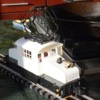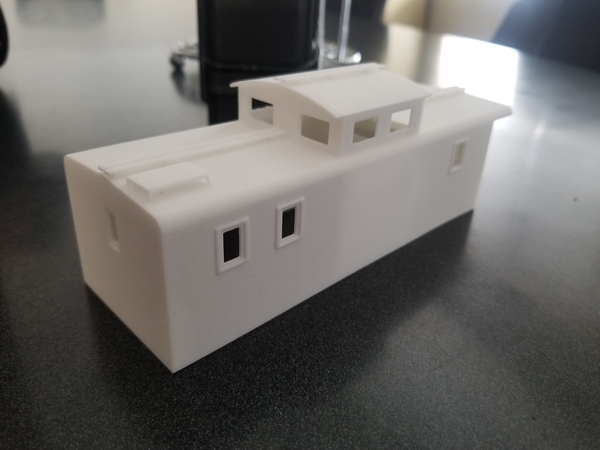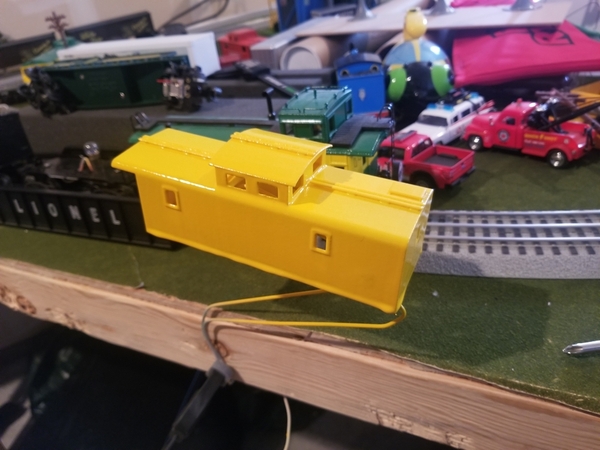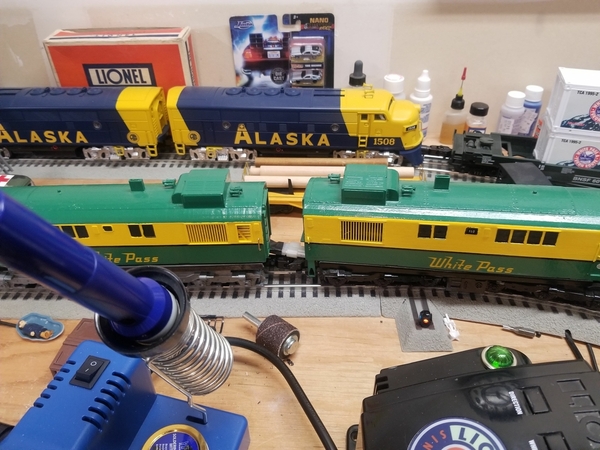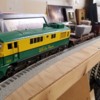it's looking great! And now you got me hooked...
I've received 2 fuel tanks from shapeways for the model I'm trying to print. One uses their default process in plastic, the other uses PLA. The default process is vastly superior and produced a finish in flat black that to me needs no further hand processing or paint. The PLA is shiny with striations. It's fine for perhaps very basic prototyping, and can be less expensive ... (you have to check using their convenient web interface) -- which would be the major motivator for using PLA at this point.
So given that, I've ordered up 3 more pieces in the default plastic process -- they are being printed now. The first is something that sits about the fuel tank -- the model which I got from elsewhere -- calls it a "fuel gauge" ... there is one per side.
The other is what I call the platform -- in the model it includes the front, back stairs -- basically the flat bit between the top engine shell and bottom wheel/truck assembly.
The fuel gauges are pretty cheap to print but the platform is pricey.
In the original models the fuel gauges were solid but I hollowed them out -- and platform was 2 pieces but I connected them. This is because (I believe) the original model is in 1:32 scale & so the parts don't fit in the printers -- but in 1:48 the pieces fit whole in the printers.
Clearly shapeways has some nice printers!
Once I get the new pieces -- I have to figure out how to connect them.
The original model has holes for connecting points. I left most of those but didn't think to NOT scale them.... so they are very tiny.
I had intended to use screws ... glue would be easiest but I'd like to be able to take it back apart.
I saw some folks using thread insets and using a soldiering iron to embed them in the plastic using heat -- looked kind cool in the vids -- but no doubt easy to completely screw up.
It seem inevitable I'll have to print again... but maybe not!
Things I used:
- free public domain engine model from internet
- free Tinkercad account
- free account at Shapeways
Costs: my time, money to print













